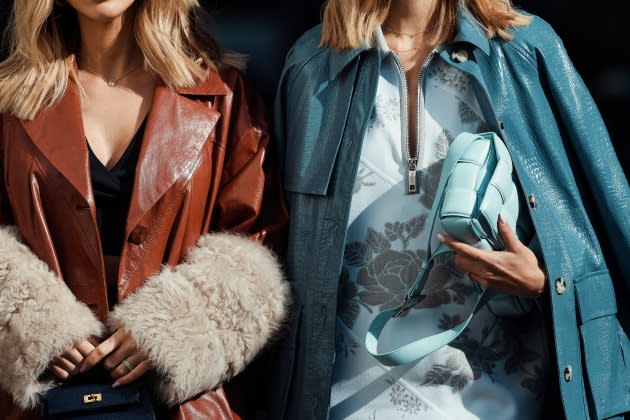Square and Afterpay Identify Influential Consumer Behaviors

Analyzing transactions from 2019 to 2023, Square and Afterpay’s State of Retail report aims to help merchants capitalize on opportunities as they look to mitigate inflation’s recent impact.
In the report, businesses that successfully stayed ahead of the competition have adopted various levels of becoming multihyphenates, understanding consumer heightened spending on services, recreational activities and entertainment.
More from WWD
By offering consumers options beyond their core offerings, companies found other profitable revenue streams that retained consumer loyalty and enticed new consumers to shop. One popular way of doing this has been to hire baristas, servers and bartenders at retail locations, which outpaced overall hiring growth by eight times.
Still, as consumers are intrigued by in-store experiences, the report reiterates that next-generation consumers want to be able to shop from brands that meet them wherever they are. Mobile commerce has continued to gain popularity, especially with Millennial and Gen Z consumers. Afterpay alone saw transactions on mobile devices rise 196 percent since 2020. Moreover, showing the heightened use of mobile devices as a customer support tool, the authors of the report state that more than 84 million messages were sent between sellers and buyers through Square Messages, the conversational commerce platform.
Buy now, pay later services, such as Afterpay, continued to see growth, with the authors of the report citing Millennial and Gen Z consumers continuing to lead the way and older shoppers adapting for lifestyle and everyday purchases. In March, Afterpay reports orders made by Gen Xers and Baby Boomers had increased by 16 percent and 12 percent, year-over-year, respectively.
Key consumer spending trends in the report include the state of the luxury market, where the authors advise retailers and brands to see the opportunity in the bifurcation of the luxury landscape. When looking deeper into consumer spending on luxury items, Afterpay’s data shows a shift from Millennials to Gen Z consumers. From March 2022 to March 2023, Millennials’ share of luxury items through Afterpay fell from 56 percent in 2019 to 45 percent in 2023, with Gen Z now representing a growing segment up to 16 percent from 13 percent in 2019.
The authors of the report cite the emerging quiet luxury trend as a leading factor for growth within the luxury segment, saying that a return to the office and a desire for sophisticated staple items has taken the trend further. By focusing on the quiet luxury trend, said the authors of the report, retail businesses “can maintain their profitability as consumers look to pad their wallets (and closets) over the long run.”
Further explaining the quiet luxury trend, Shakaila Forbes-Bell, fashion psychologist, said “the rise of social media has caused a shift from generation ‘we’ to generation ‘me,’ which has been positively correlated with a rise in narcissism. A recent study conducted on young consumers in the U.S. and China revealed that covert narcissists gravitate to quiet luxury goods for hedonistic reasons to treat and feel good about themselves rather than to signal any kind of status.”
At the same time, the companies urged businesses to focus on purpose-driven categories. Conscious consumerism continues to solidify as an important trend in consumer behavior among younger Americans who chose to spend their money on eco-friendly products made of high-quality materials. Millennial and Gen Z consumers currently make up the majority of sustainable product sales representing nearly 70 percent of spending as of the first quarter of 2023. Notably, the authors of the report urged businesses to be intentional about environmentally conscious practices, warning against being seen as performative which will lose customers.
Looking ahead at the holiday season, Square and Afterpay made several recommendations including elements aimed at elevating a brand’s discoverability and creating a lasting impression. Suggestions include: bolstering customer relations with automated messaging tools and cutting through the noise with shopping experiences, in-person events, brand or influencer collaborations, selling memberships and subscriptions, personalized suggestions to expedite online pre-orders or opening up a branded coffee or smoothie bar.
Best of WWD
